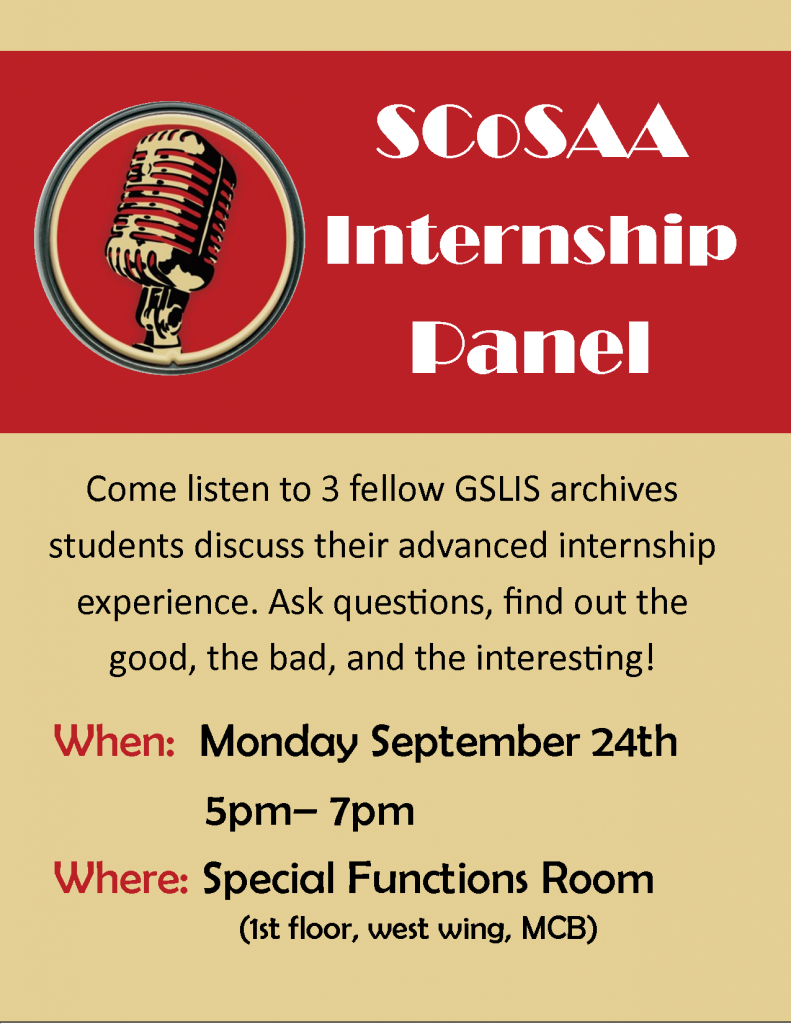Hear about Archives students’ capstone internship experiences!
When: Monday, September 24, 2012 from 5pm-7pm
Where: Special Functions Room (West wing Main College Building main floor)
The Special Functions Room is located on the first floor of the Main Campus Building close to the stairs of the building’s west wing. It is on the left side of the hallway, just past the elevator.
Speakers:
Miriam Kashem – The University Archives at Florida International University
I interned at the University Archives at Florida International University. While an academic archive, the department also acts as a community archive, with collections depicting the history of Miami and the various cultural communities. I worked on two large collections- one about Mary Brickell who was one of the founders of Miami, and another about a university professor who worked to help increase awareness about the plight of the Cuban and Haitian refugee crises in the 1980s that dramatically changed the ethnic makeup of the city.
Amanda Strauss – Harvard University Archives
I worked at the Harvard University Archives (I also completed my 438 internship at HUA) and processed the Occupy Harvard collection. This was a hybrid analog/digital collection, with 90% of the collection being digital materials. Most of the digital materials were social media. I learned a great deal about digital preservation and the challenges of documenting contemporary social movements whose communications are largely disseminated through social media. I made a draft EAC-CPF record and learned the Archivist’s Toolkit. I created a Plan of Work for how these types of collections will be processed at HUA in the future; this project was the first of its kind that HUA has done, so it was very much a test-case. We thought a lot about description, applying DACS to digital materials and trying to make description consistent across systems (the OPAC, the finding aid, Harvard’s web-archive, etc).
Jasmine Jones – UCLA Library Special Collections
I interned at the UCLA Library Special Collections. I was responsible for the complete processing of two consecutive additions to the June Wayne Papers, including conducting initial surveys, creating processing plans, arranging and describing materials, addressing preservation issues, and creating a DACS compliant finding aid using the Archivists? Toolkit. The collection consists of June Wayne’s correspondence, exhibition catalogues, photographs, publicity materials, funding requests, and personal writings which document her career as a painter, lithographer, weaver, writer and political activist.
